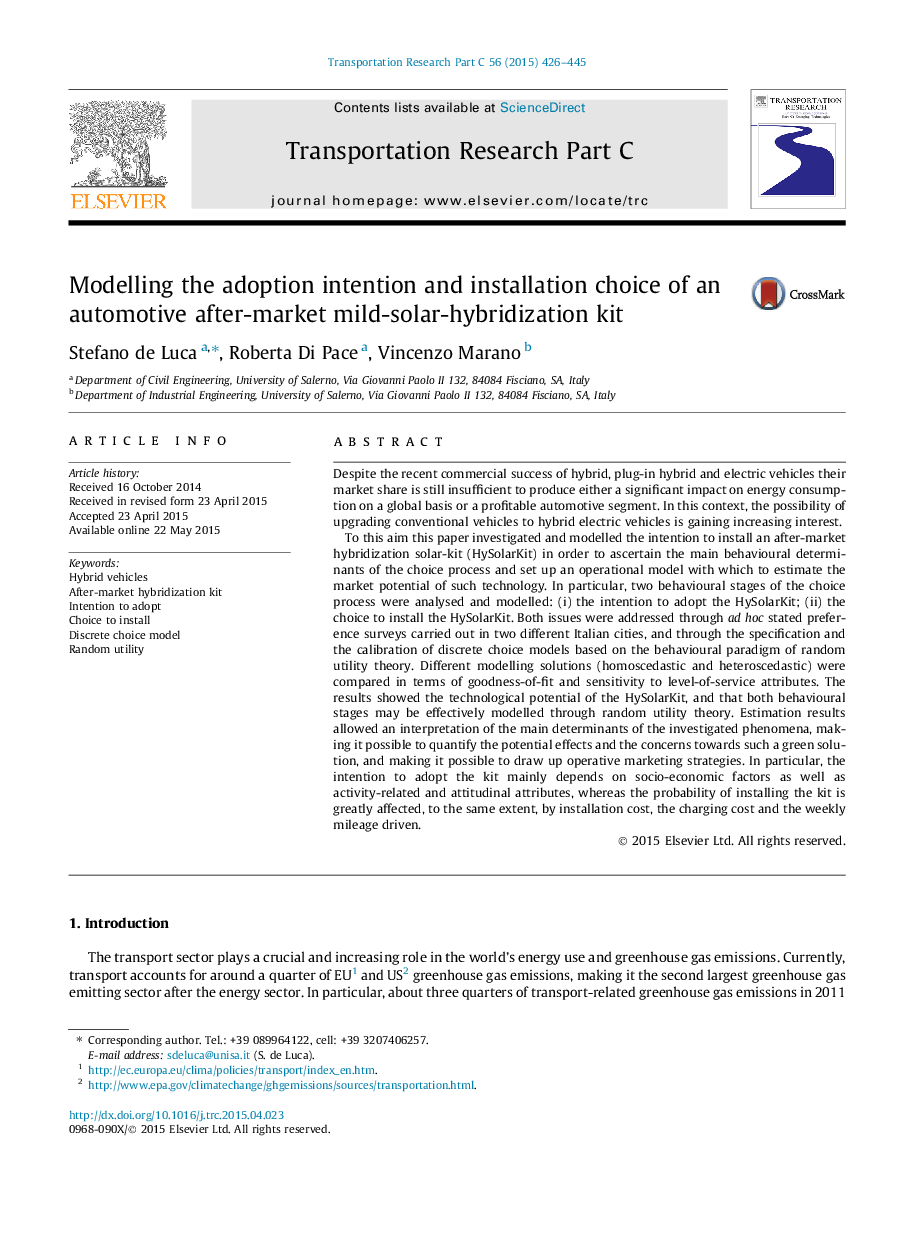| Article ID | Journal | Published Year | Pages | File Type |
|---|---|---|---|---|
| 6936825 | Transportation Research Part C: Emerging Technologies | 2015 | 20 Pages |
Abstract
To this aim this paper investigated and modelled the intention to install an after-market hybridization solar-kit (HySolarKit) in order to ascertain the main behavioural determinants of the choice process and set up an operational model with which to estimate the market potential of such technology. In particular, two behavioural stages of the choice process were analysed and modelled: (i) the intention to adopt the HySolarKit; (ii) the choice to install the HySolarKit. Both issues were addressed through ad hoc stated preference surveys carried out in two different Italian cities, and through the specification and the calibration of discrete choice models based on the behavioural paradigm of random utility theory. Different modelling solutions (homoscedastic and heteroscedastic) were compared in terms of goodness-of-fit and sensitivity to level-of-service attributes. The results showed the technological potential of the HySolarKit, and that both behavioural stages may be effectively modelled through random utility theory. Estimation results allowed an interpretation of the main determinants of the investigated phenomena, making it possible to quantify the potential effects and the concerns towards such a green solution, and making it possible to draw up operative marketing strategies. In particular, the intention to adopt the kit mainly depends on socio-economic factors as well as activity-related and attitudinal attributes, whereas the probability of installing the kit is greatly affected, to the same extent, by installation cost, the charging cost and the weekly mileage driven.
Related Topics
Physical Sciences and Engineering
Computer Science
Computer Science Applications
Authors
Stefano de Luca, Roberta Di Pace, Vincenzo Marano,
